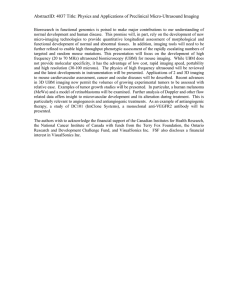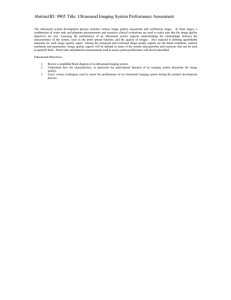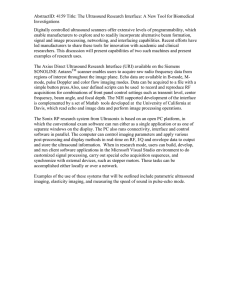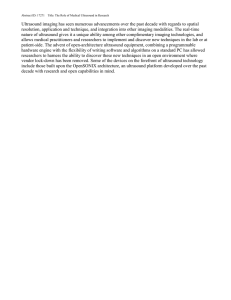AbstractID: 4498 Title: Functional Analysis of Tumor Vasculature post Antiangiogenic
advertisement
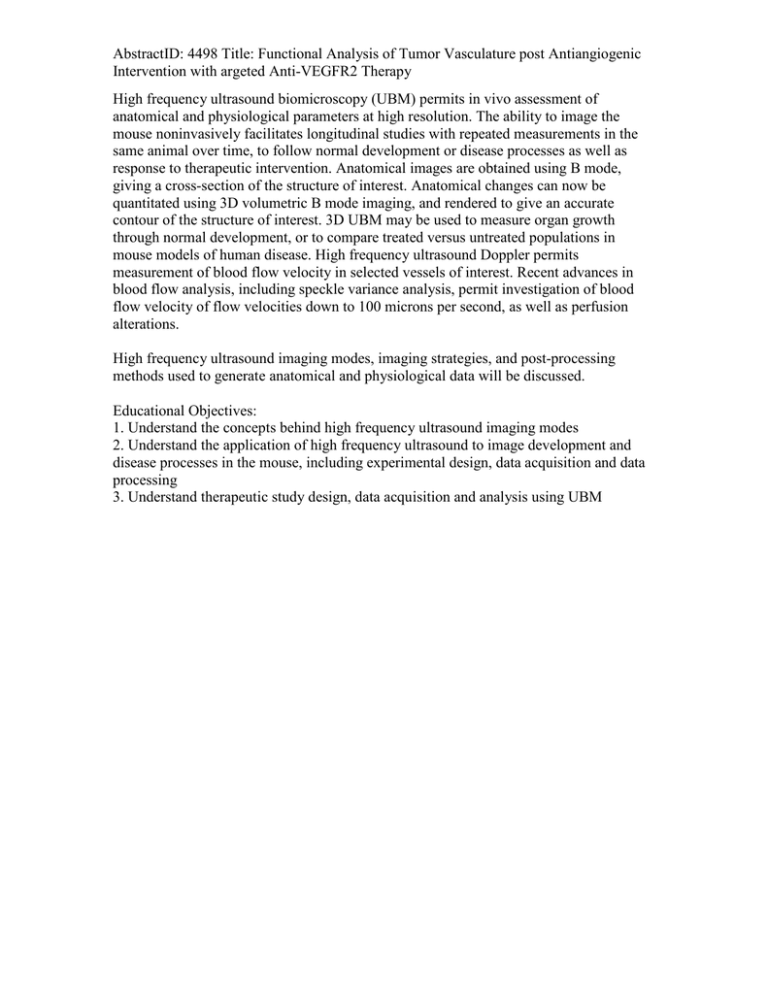
AbstractID: 4498 Title: Functional Analysis of Tumor Vasculature post Antiangiogenic Intervention with argeted Anti-VEGFR2 Therapy High frequency ultrasound biomicroscopy (UBM) permits in vivo assessment of anatomical and physiological parameters at high resolution. The ability to image the mouse noninvasively facilitates longitudinal studies with repeated measurements in the same animal over time, to follow normal development or disease processes as well as response to therapeutic intervention. Anatomical images are obtained using B mode, giving a cross-section of the structure of interest. Anatomical changes can now be quantitated using 3D volumetric B mode imaging, and rendered to give an accurate contour of the structure of interest. 3D UBM may be used to measure organ growth through normal development, or to compare treated versus untreated populations in mouse models of human disease. High frequency ultrasound Doppler permits measurement of blood flow velocity in selected vessels of interest. Recent advances in blood flow analysis, including speckle variance analysis, permit investigation of blood flow velocity of flow velocities down to 100 microns per second, as well as perfusion alterations. High frequency ultrasound imaging modes, imaging strategies, and post-processing methods used to generate anatomical and physiological data will be discussed. Educational Objectives: 1. Understand the concepts behind high frequency ultrasound imaging modes 2. Understand the application of high frequency ultrasound to image development and disease processes in the mouse, including experimental design, data acquisition and data processing 3. Understand therapeutic study design, data acquisition and analysis using UBM
